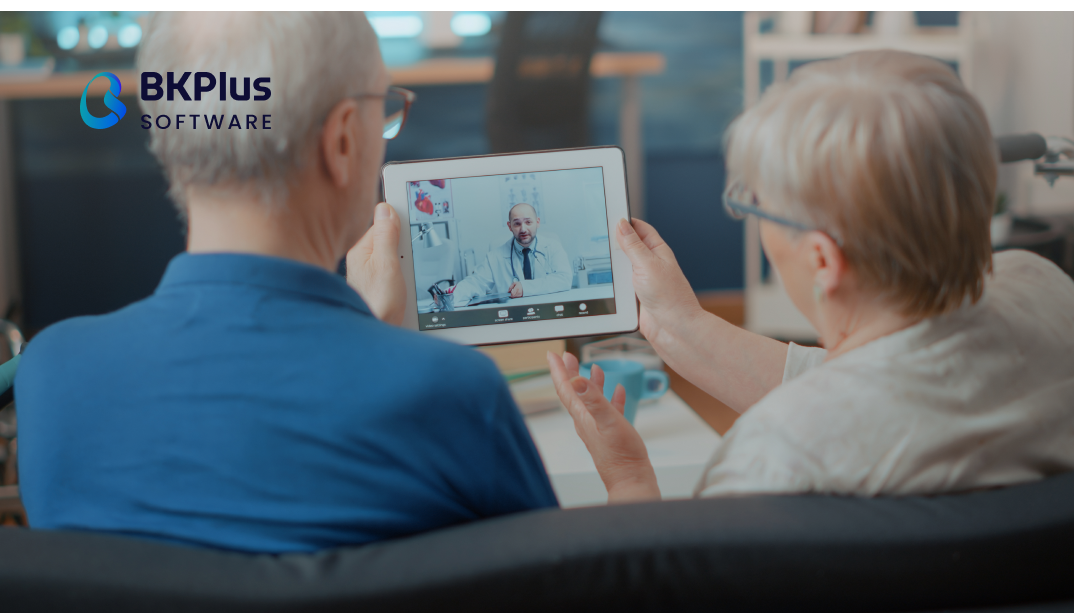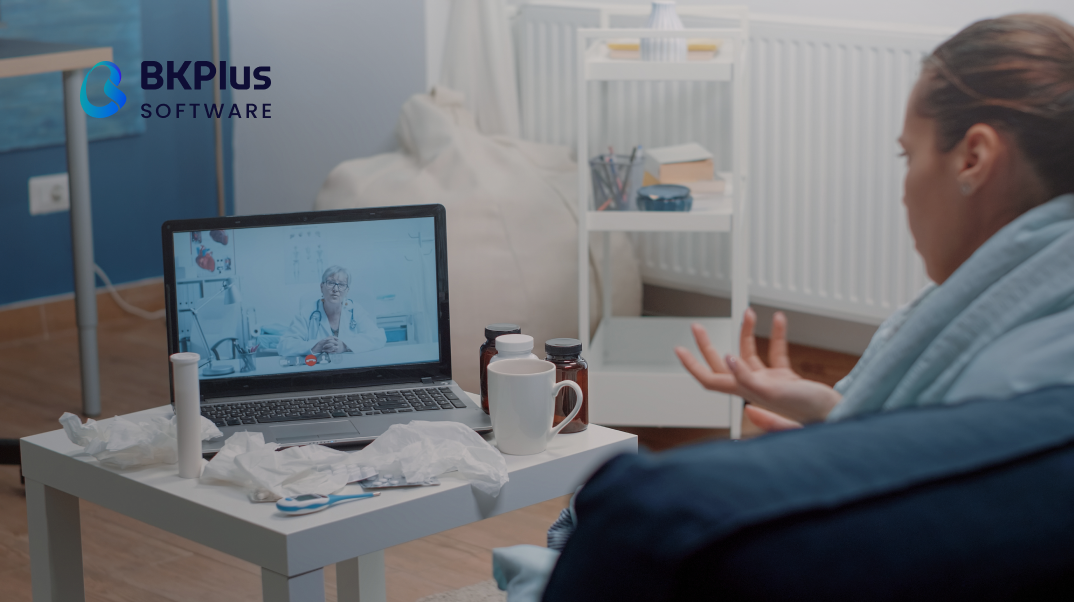In today’s world, where technological advancements continue to reshape various industries, healthcare is no exception. Remote Patient Monitoring (RPM) has emerged as a revolutionary approach that utilizes technology to remotely monitor and manage the health status of patients.
However, managing and controlling this variety is challenging without a suitable digital solution. This article describes the technical trends, benefits, software types, devices, apps, features and the development of an app for remote patient monitoring.
What is RPM?
Remote patient monitoring (RPM) uses digital technology to capture the medical and personal health data of a current or potential patient. After a condition requiring treatment is identified and information is collected, the data is transmitted to a healthcare provider for review.
The physician can use the collected data to diagnose and monitor the patient’s health. In this way, RPM helps them offer health and wellness advice and change the type of medication or dosage according to the results.
RPM also supports self-care and reduces the number of in-person doctor visits and time spent in hospitals. In addition, RPM platforms enable elderly or disabled people to live more independently and delay moving into a care facility.
How RPM Works?
Devices that are used at RPM include heart rate and blood pressure monitors, scales, spirometers, oximeters and blood glucose meters. RPM services only require mobile medical devices and technologies that collect and transmit health-related information to the healthcare provider. No interactive audiovisual or virtual visits are required.
Remote patient monitoring also allows clinicians to keep an eye on patients who are prone to losing their balance by alerting them in the event of a fall. It facilitates the monitoring of individuals with addictions and substance abuse tendencies, as well as tracking calorie intake and diet programs
RPM Benefits
If your goal is to develop a remote patient monitoring app, it’s crucial to understand the significant benefits it offers. We have facilitated the utilization of patient monitoring software, benefiting patients, doctors, and hospitals alike.
Benefits for Patients
RPM solutions grant patients swift and convenient access to medical care. Treatment recommendations can be received without the need to leave their homes. Additionally, these medical monitoring applications enable early-stage disease diagnosis, leading not only to cost savings on treatment but also potentially saving lives.
RPM software contributes to heightened patient satisfaction, as individuals appreciate the continuous care they receive. Consequently, patients become more proactive in managing their health.

Benefits for Doctors and Clinics
The development of health monitoring applications is invaluable for medical professionals. Doctors and hospitals can significantly enhance their approaches to treating both acute and chronic diseases through RPM software, which provides real-time updates on a patient’s health status.
RPM applications play a crucial role in reducing emergency risks, as timely data about patient symptoms and conditions are made available to doctors. For instance, RPM solutions can aid in predicting conditions like hypoglycemia.
Moreover, hospital app development focused on remote patient monitoring apps helps optimize clinical resources by decreasing the number of unnecessary hospitalizations.
Types of RPM apps
If you want to build a patient remote monitoring system, you can take inspiration from a wide range of solutions that monitor health conditions remotely.
IoT medical application. The wearables for heart attack prevention, glucose trackers, etc., gather vital information about health and generate alerts in emergency cases. That’s why you should consider making an Internet of Things (IoT) solution compatible with a wide range of wearable medical devices.
Questionnaire application. Some patients respond better to questionnaires and share their current health data willingly. They are especially successful in tracking mental illnesses and depression. In fact, questionnaires are one of the easiest medical solutions from the perspective of remote patient monitoring app development. They are quite undemanding: they require zero purchases from providers.
Video conferencing applications. The remote patient monitoring software development of video conferencing apps has a bunch of invaluable functions. It can be used for examinations, appointments, and prescribing drugs without commuting. You can also extend the videoconferencing app’s features by adding queue management, electronic medical records, billing, conferencing for doctors, etc.
Precision medicine solution. This type of remote patient monitoring app is used for research. In essence, they anonymize participants’ health data and represent it in an analytical report.
How to Develop RPM Software
Developing a remote patient monitoring system requires a systematic approach to achieve the desired results. Here is a step-by-step guide to building a comprehensive RPM system:

Define Requirements: Outline the specific needs and expectations of patients, healthcare professionals and the organization. Identify the target conditions or groups and select appropriate monitoring devices and technologies.
Select Monitoring Devices and Technologies: Select accurate, reliable and user-friendly wearable and non-wearable monitoring devices. Select appropriate connectivity technologies (bluetooth, wi-fi or cellular) for seamless data transfer and device management.
Design User Interface and User Experience: Develop a user-friendly interface for healthcare professionals and patients. Provide intuitive navigation and clear, concise visualization of data so it is easy to understand and act upon.
Integrate with Existing Healthcare Systems: Integrate the RPM system with electronic health records (EHR) and medical software using APIs or custom development. Enable seamless data exchange between different systems to avoid redundancies.
Develop Secure Data Storage and Transmission Solutions: Create a secure, scalable data storage solution, such as cloud-based storage that meets industry regulations. Implement secure data transfer mechanisms, including encryption and secure APIs.
Implement Data Analytics and AI Tools: Integrate data analytics and AI tools, such as machine learning algorithms, for efficient interpretation of patient data. Deliver actionable insights and predictive analytics to support healthcare professionals in decision making.
Test and Validate the RPM System: Thoroughly test and validate functionality, reliability and security before deployment. Then conduct user testing to assess experiences, identify areas for improvement, and ensure alignment with goals.
Conclusion
By looking at the technology innovation, it’s not hard to see how remote patient monitoring will advance shortly. More and more personal health devices will be invented to monitor health, requiring the improvement of remote patient monitoring systems. Understanding the basic factors of the RPM system is the first step to unveiling a path toward a more connected, efficient, and patient-centric future in healthcare.
BKPlus Software team are experts in providing healthcare app development services. Over this period, we have witnessed the emergence of numerous notable medical products, and now, we stand ready to develop one tailored to your needs.
Our dedicated team is capable of crafting a wide array of healthcare-related products, with a focus on delivering excellence. Whether it’s appointment scheduling software, customized Health apps, or cutting-edge RPM platforms, we are well-equipped to bring your vision to life. Just contact us, and we will implement your idea into reality.



